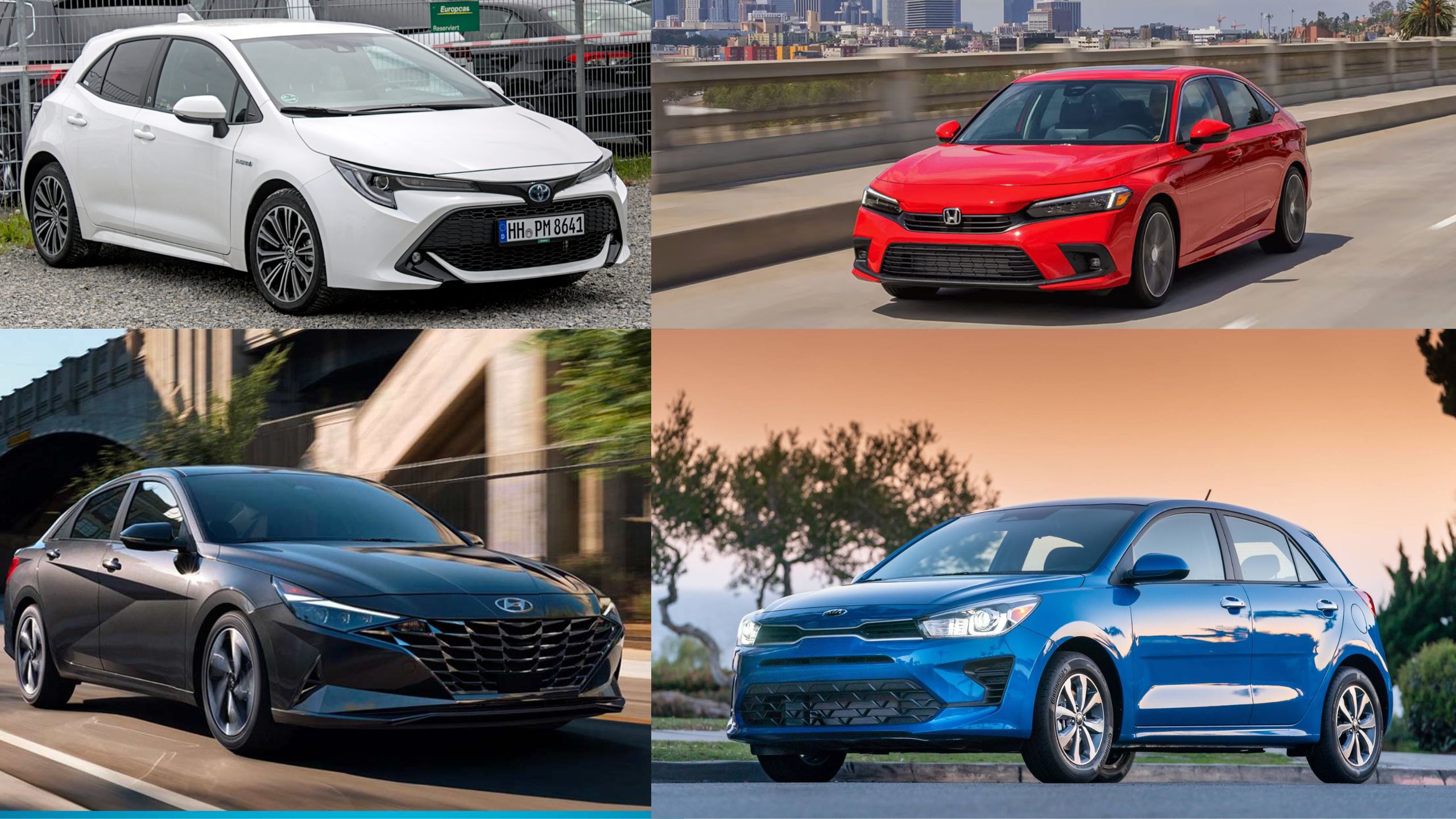When shopping for an affordable vehicle, the sticker price is just the beginning of the financial story. The true cost of car ownership extends far beyond the dealership lot, encompassing insurance premiums, fuel consumption, maintenance needs, depreciation rates, and repair frequencies.
Budget-conscious consumers need to look beyond the initial purchase price to understand the long-term financial commitment they’re making. Some vehicles offer remarkable value, providing reliable transportation with minimal ongoing expenses.
These budget-friendly options combine reasonable purchase prices with impressive fuel efficiency, affordable insurance rates, and solid reliability records that keep repair costs at bay.
On the opposite end of the spectrum are vehicles that might seem like bargains initially but gradually drain owners’ bank accounts through excessive fuel consumption, expensive maintenance requirements, rapid depreciation, or frequent mechanical issues.
This guide explores five budget cars that truly deliver on their promise of affordability through low total ownership costs, followed by five deceptive “bargains” that end up costing significantly more than expected over time.
5 Budget Cars With Low Ownership Costs
Understanding these distinctions can help consumers make informed decisions that align with both their immediate financial situations and long-term budget goals.
1. Toyota Corolla
The Toyota Corolla has built its reputation as the quintessential budget-friendly vehicle that doesn’t sacrifice quality or reliability. With a starting MSRP typically ranging from $20,000 to $22,000, the Corolla offers an accessible entry point for many consumers.
What truly distinguishes this compact sedan, however, is its exceptional total cost of ownership profile. The Corolla consistently achieves impressive fuel economy ratings of approximately 31-33 mpg in the city and 38-41 mpg on highways, depending on the specific trim and model year.
This efficiency translates to significant savings over time, especially during periods of volatile fuel prices. Insurance companies generally classify the Corolla in their lower premium tiers due to its excellent safety ratings and relatively inexpensive repair costs, resulting in monthly payments that typically fall below average.
Perhaps most notable is the Corolla’s legendary reliability. Consumer Reports and J.D. Power consistently rank this Toyota among the most dependable vehicles available, with many models easily surpassing 200,000 miles with only routine maintenance.
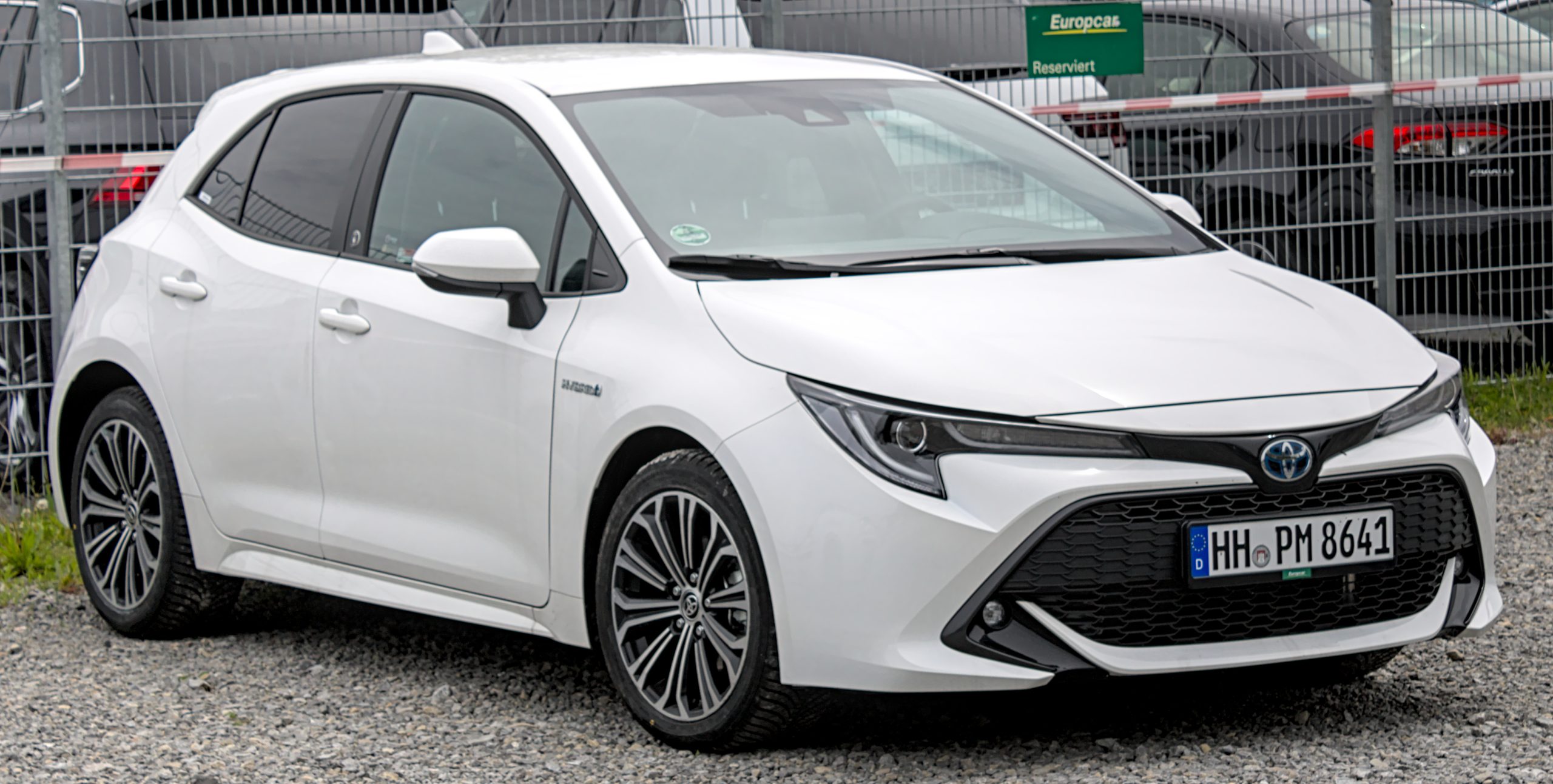
The vehicle’s widespread popularity means that replacement parts are readily available and typically affordable when compared to competitors. Additionally, the simplicity of the Corolla’s mechanical systems makes it accessible for independent mechanics, reducing labor costs for repairs outside warranty periods.
The Corolla also maintains respectable resale value, depreciating more slowly than many competitors in its class. After five years, owners can typically expect to recover 50-55% of their initial investment when selling, significantly higher than the industry average.
This combination of low running costs and strong value retention makes the Toyota Corolla an exceptional choice for budget-conscious consumers seeking a truly economical vehicle over the long term.
2. Honda Civic
The Honda Civic represents one of the smartest financial investments in the compact car segment, with a starting price of approximately $21,000 to $23,000. While this positions it slightly above some budget competitors initially, the Civic’s extraordinary total ownership profile quickly compensates for this modest premium.
Fuel efficiency stands as one of the Civic’s most impressive attributes, with most standard models achieving approximately 30-33 mpg in city driving and 37-42 mpg on highways. The available hybrid variant pushes these figures even higher.
This exceptional efficiency means owners typically spend $200-$400 less annually on fuel compared to competitors with similar dimensions and performance characteristics.
Honda’s engineering reputation translates directly to maintenance savings with the Civic. The vehicle’s robust build quality and high-quality components result in maintenance schedules that often require less frequent service than competitors.

The timing chain design (versus a timing belt in some rivals) eliminates a major maintenance expense, while the vehicle’s cooling system and transmission have proven remarkably durable across multiple generations.
According to reliability data, Civic owners typically spend 15-20% less on unscheduled repairs over a five-year period compared to segment averages. Insurance companies recognize the Civic’s strong safety ratings and relatively straightforward repair procedures, typically resulting in premiums that fall near or slightly below segment averages.
The vehicle’s comprehensive standard safety features, including Honda Sensing on all models, may qualify owners for additional discounts with many insurance providers.
The Civic’s resale value performance further enhances its ownership value proposition. After three years, Civics typically retain approximately 60-65% of their original value, with five-year figures around 45-50%, both significantly above industry averages.
This strong residual value reduces the effective cost of ownership for buyers who plan to sell or trade after several years. Combined with its efficiency and reliability advantages, the Honda Civic represents an excellent choice for budget-conscious buyers focused on long-term ownership costs.
3. Hyundai Elantra
The Hyundai Elantra represents one of the most compelling value propositions in the automotive marketplace, with an accessible starting MSRP of approximately $19,000 to $21,000.
This competitive pricing positions the Elantra as an immediate contender for budget-conscious shoppers, but it’s the vehicle’s comprehensive approach to ownership costs that truly distinguishes it.
Hyundai’s industry-leading warranty coverage provides exceptional financial security for Elantra owners. The 10-year/100,000-mile powertrain warranty and 5-year/60,000-mile comprehensive coverage significantly outpace competitors’ offerings, potentially saving owners thousands in repair costs during the critical middle years of vehicle ownership.
This warranty protection effectively reduces financial uncertainty and provides valuable peace of mind, a benefit difficult to quantify but immensely valuable in practical terms.
The Elantra delivers impressive fuel economy across its lineup, with standard models achieving approximately 31-33 mpg in combined driving conditions. The available hybrid variant pushes efficiency even further, reaching up to 50 mpg combined in real-world conditions.
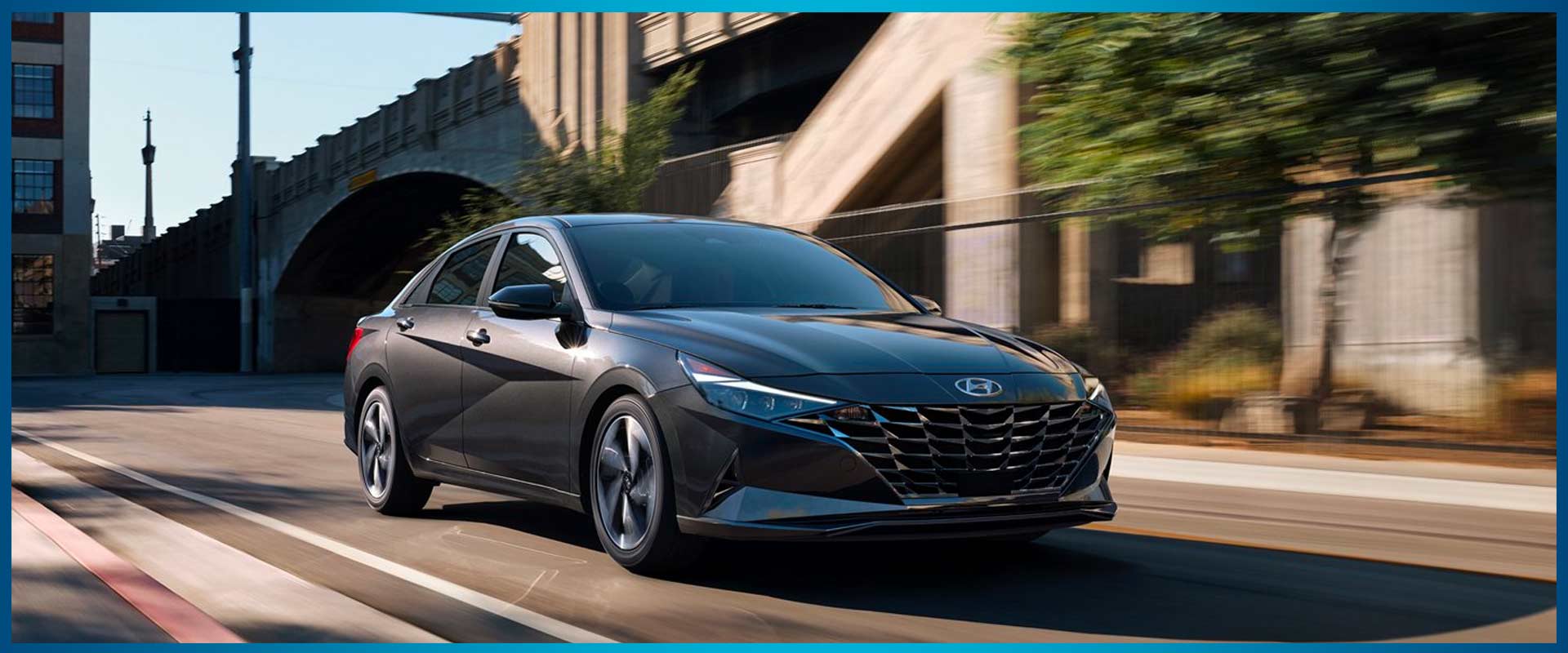
This exceptional efficiency translates to approximately $400-$600 in annual fuel savings compared to less efficient compact competitors. Maintenance costs for the Elantra benefit from Hyundai’s straightforward engineering approach and increasingly strong reliability ratings.
The vehicle’s maintenance schedule typically requires fewer dealer visits than many competitors, with longer intervals between major services. Independent reliability studies show the Elantra experiencing fewer problematic issues than segment averages, particularly in powertrain and electrical systems, where repairs tend to be most costly.
Insurance costs for the Elantra generally fall below segment averages due to its safety features, reasonable repair costs, and theft rates that rank among the lowest in the compact car class.
The vehicle’s impressive array of standard safety technology, including forward collision avoidance assist, lane keeping assist, and driver attention warning, may qualify owners for additional premium discounts with many insurance providers.
While the Elantra’s depreciation rate is slightly higher than some Japanese competitors, the lower initial purchase price often results in a similar or better actual cash position after several years of ownership.
For value-oriented consumers who prioritize low day-to-day operating costs with minimal financial surprises, the Hyundai Elantra represents an exceptionally well-rounded economic choice.
4. Kia Rio
The Kia Rio stands as one of the most economical vehicles available in the American market, with a remarkably accessible starting price of approximately $15,000 to $17,000, positioning it among the most affordable new cars available.
This subcompact offering delivers exceptional value not just through its purchase price but through a comprehensive approach to minimizing ownership costs across multiple categories.
Fuel economy represents one of the Rio’s strongest financial attributes, with the vehicle achieving approximately 33-36 mpg in combined driving conditions. This efficiency translates to annual fuel costs that frequently fall $500-$700 below comparable small crossovers and even $200-$300 below some similarly sized competitors.
The Rio’s conventional powertrain design also avoids the potential long-term replacement costs associated with hybrid battery systems, providing predictable operating expenses throughout its lifespan.
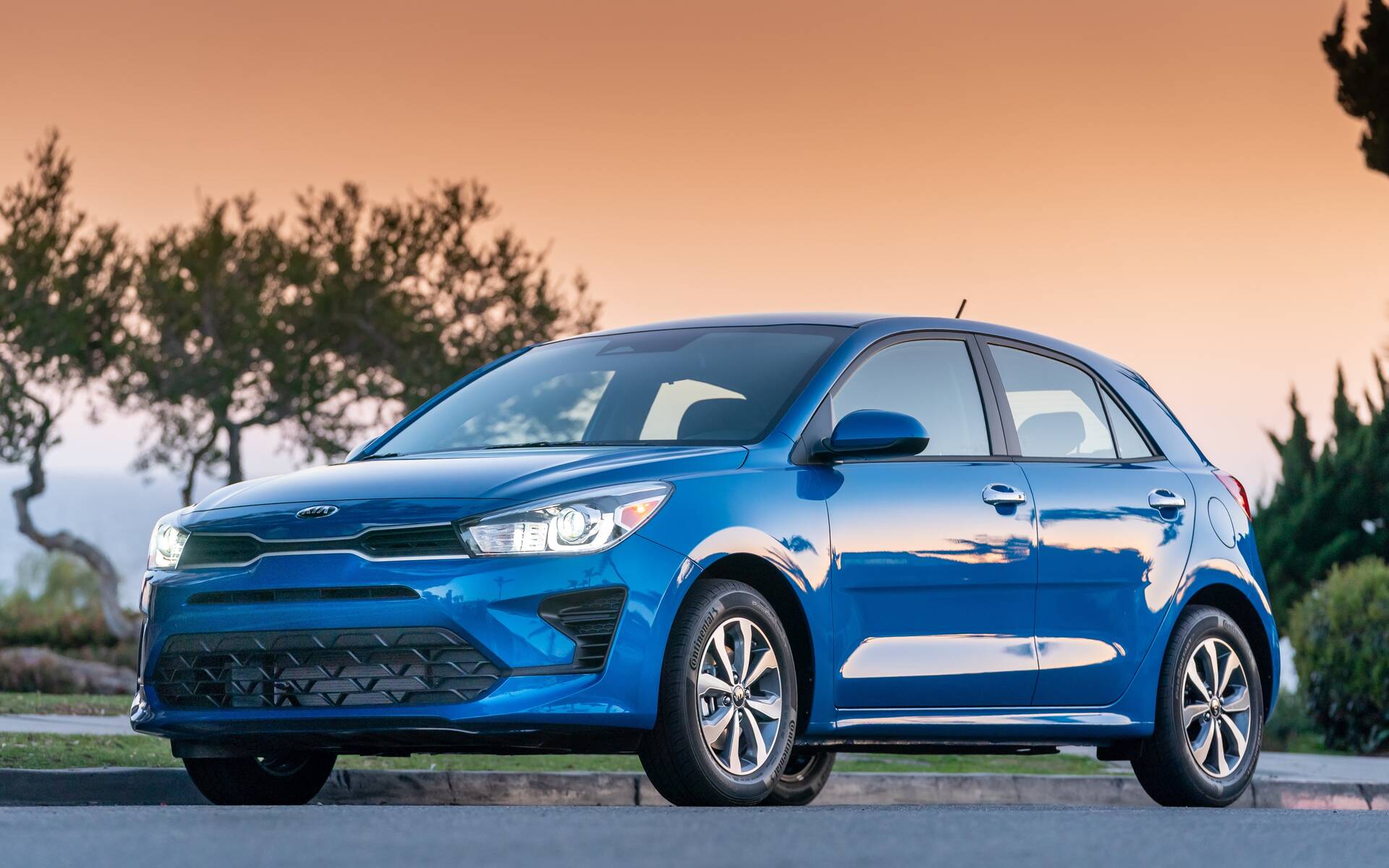
Maintenance simplicity contributes significantly to the Rio’s economic appeal. The vehicle’s straightforward mechanical systems typically require less specialized equipment and diagnostic procedures than more complex alternatives. Service intervals are reasonably spaced, with major maintenance typically required less frequently than in several competitor models.
The Rio’s timing chain design eliminates the periodic replacement cost of timing belts, a significant maintenance expense in some competing models that can range from $500-$900 when required.
Insurance costs for the Rio benefit from several factors that typically position premiums below segment averages. The vehicle’s modest performance specifications, reasonable repair costs, and low theft rates all contribute to favorable insurance classifications. While the Rio doesn’t offer the most comprehensive standard safety package in its class, the available driver assistance features are sufficient to qualify for safety discounts with many insurance providers.
Kia’s warranty coverage further enhances the Rio’s value proposition with a 10-year/100,000-mile powertrain warranty and 5-year/60,000-mile basic coverage. This protection provides significant financial security during the critical middle years of ownership when repairs typically become more frequent and expensive in competing vehicles with less robust warranty protection.
For urban dwellers and commuters seeking truly economical transportation, the Kia Rio’s combination of low purchase price, exceptional fuel efficiency, simplified maintenance requirements, and comprehensive warranty coverage makes it an outstanding choice that minimizes both immediate and long-term financial demands.
Also Read: 5 Cars You Can Keep for 15+ Years and 5 That Break Within 5 Years
5. Mazda3
The Mazda3 represents a unique value proposition in the compact car segment, with a starting MSRP of approximately $20,000 to $23,000. While this positions it slightly above some budget competitors, the Mazda3’s exceptional total cost of ownership profile and near-premium attributes deliver remarkable value for cost-conscious consumers seeking a raised driving experience.
Fuel efficiency in the Mazda3 benefits from the company’s innovative Skyactiv technology, with most models achieving approximately 28-30 mpg in city driving and 36-38 mpg on highways.
The optional 2.5-liter engine delivers more performance without significantly compromising efficiency, demonstrating Mazda’s engineering prowess in balancing power and economy.
These figures place the Mazda3 among the more efficient options in its segment, particularly impressive considering its performance characteristics.
Maintenance costs for the Mazda3 benefit from the brand’s strong reliability ratings, which have improved steadily in recent years to rival traditional Japanese reliability leaders.
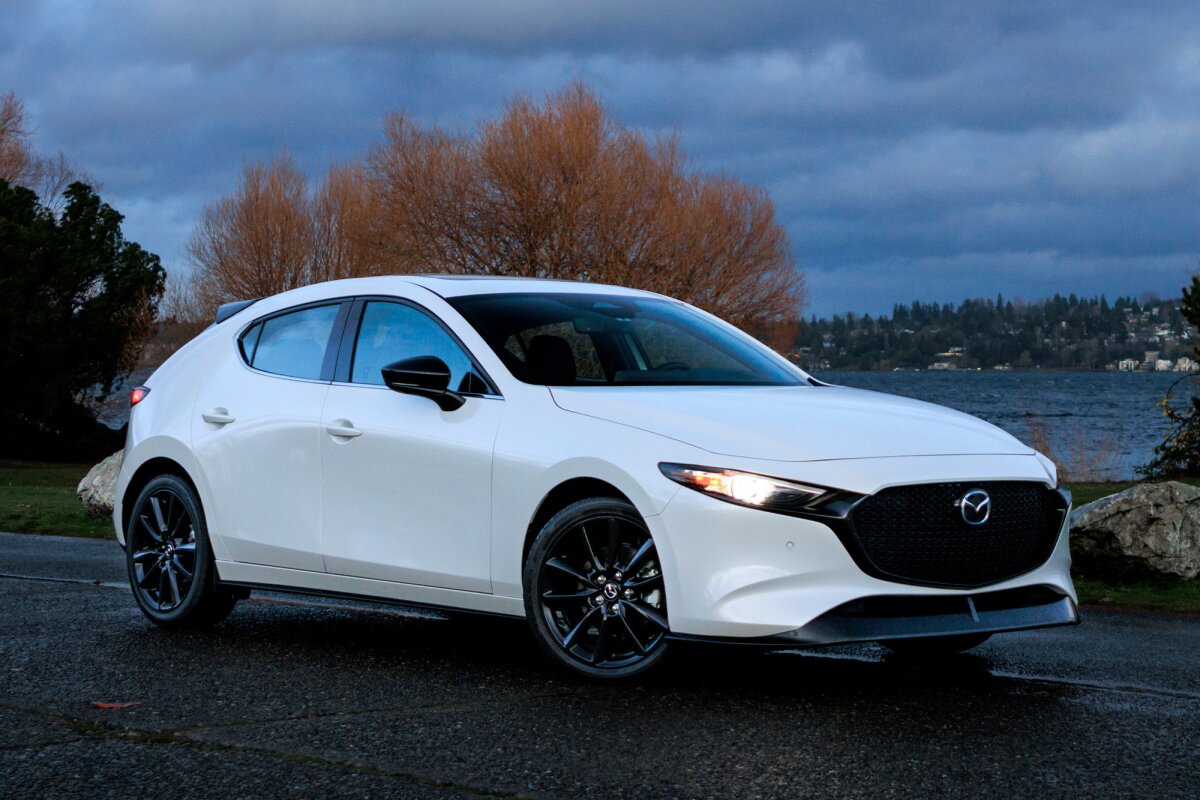
Consumer Reports and J.D. Power studies consistently place the Mazda3 among the most dependable compact options, with particularly strong scores for powertrain durability and electrical system reliability. The vehicle’s maintenance schedule is reasonably spaced, with most models requiring less frequent service than segment averages.
Perhaps most notable is the Mazda3’s extraordinary depreciation performance. Unlike many compact competitors that lose 45-50% of their value after three years, the Mazda3 typically retains approximately 55-60% of its original value during the same period.
This exceptional resale performance substantially reduces the effective cost of ownership for buyers who plan to sell or trade after several years. Insurance costs for the Mazda3 generally fall in the moderate range for its class, with premiums slightly higher than the most basic compacts but lower than performance-oriented alternatives.
The vehicle’s comprehensive standard safety features, including automatic emergency braking, adaptive cruise control, and lane-keeping assist, may qualify owners for safety discounts with many insurance providers.
The Mazda3’s near-premium interior quality, sophisticated driving dynamics, and upscale design elements deliver subjective value that transcends pure financial calculations. For budget-conscious consumers who seek emotional satisfaction alongside economic pragmatism, the Mazda3 represents an excellent balance between immediate affordability, long-term value, and daily driving enjoyment.
5 Budget Cars That Empty Wallets
When it comes to cars, “budget-friendly” doesn’t always mean financially smart. Some low-cost rides come with a hidden price tag—breakdowns, expensive repairs, abysmal fuel economy, or plummeting resale value.
In this article, we’re breaking down 5 so-called budget cars that might look like a deal but are notorious for emptying wallets in the long run.
1. Mitsubishi Mirage
The Mitsubishi Mirage presents an alluring initial proposition with its exceptionally low starting price of approximately $14,000 to $17,000, positioning it among the most affordable new cars available in North America. This bargain-basement entry point, however, masks a problematic ownership experience that can drain wallets over the long term.
While the Mirage delivers impressive fuel economy ratings (approximately 36-39 mpg combined), these efficiency benefits are substantially offset by numerous cost factors that emerge throughout ownership.
The vehicle’s anemic 78-horsepower three-cylinder engine struggles in real-world driving conditions, particularly at highway speeds or with multiple passengers.
This underpowered performance characteristic requires frequent high-RPM operation that may reduce actual fuel economy below EPA estimates and potentially accelerate component wear compared to more adequately powered alternatives.
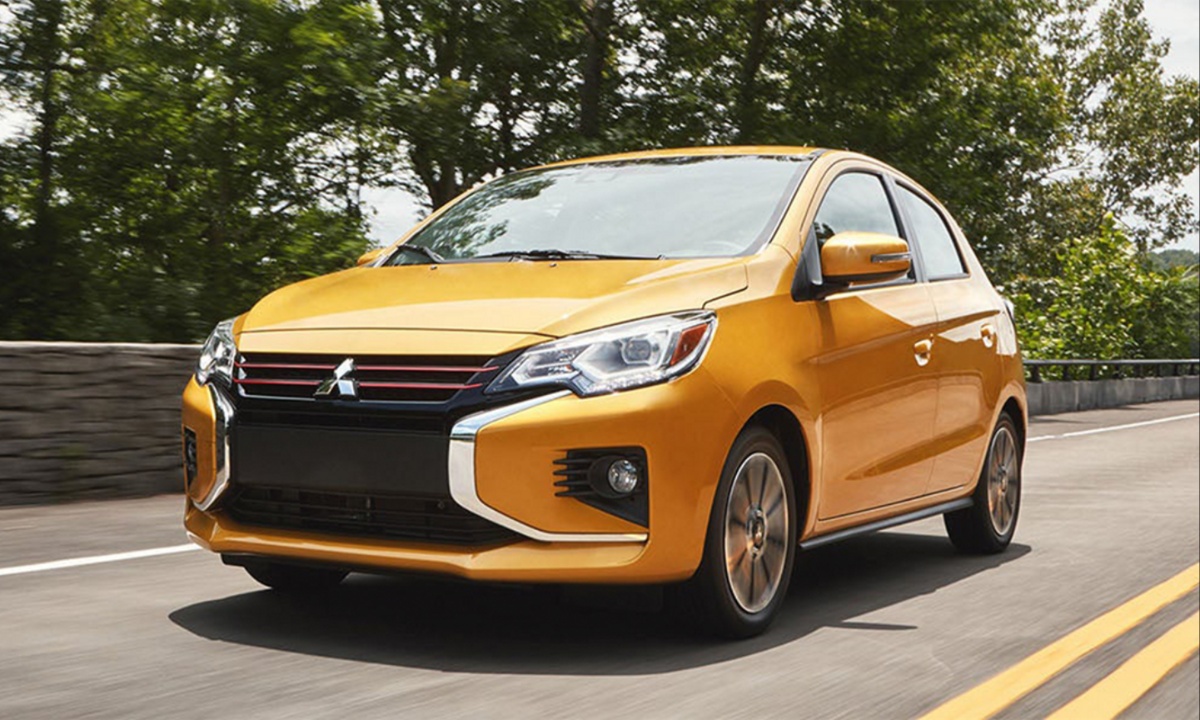
Depreciation represents the Mirage’s most devastating financial drawback. The model typically loses 45-50% of its value within just the first year of ownership, with three-year depreciation figures approaching 60-65% among the worst in the automotive industry.
This catastrophic value erosion effectively negates much of the initial purchase price advantage, particularly for buyers who finance their purchase. A three-year-old Mirage often commands little more than $6,000-$7,000 in resale, representing a severe financial loss regardless of the initial purchase discount.
The Mirage’s build quality and material selection reflect its budget origins, with thin sheet metal, minimal sound insulation, and hard plastic surfaces throughout.
These economy-focused construction choices contribute to higher than average NVH (noise, vibration, harshness) levels that may accelerate owner dissatisfaction and prompt premature replacement, a hidden cost factor not captured in traditional operating expense calculations.
Repair frequency ratings from Consumer Reports and J.D. Power consistently place the Mirage below segment averages, with electrical system issues and transmission concerns emerging as particular weak points as vehicles age.
Insurance costs for the Mirage offer little relief, with premiums typically similar to more substantial and capable compact alternatives despite the vehicle’s lower value.
This insurance cost inefficiency stems from the Mirage’s less advanced safety systems, structural limitations, and relatively poor crash test performance compared to slightly more expensive competitors.
For budget-conscious consumers, the Mirage’s deceptively low purchase price masks a problematic total ownership experience characterized by extreme depreciation, questionable long-term durability, and a driving experience that may prompt premature replacement, ultimately resulting in significantly higher effective costs than initially apparent.
2. Fiat 500
The Fiat 500 enters the market with undeniable European charm and a relatively accessible starting price of approximately $18,000 to $20,000 when new. This stylish Italian city car attracts budget-conscious consumers with its distinctive aesthetics and compact dimensions, yet conceals a problematic ownership cost profile that can strain financial resources over time.
Maintenance and repair expenses represent the most significant financial burden for Fiat 500 owners. The vehicle’s specialized components and relatively limited dealer network in North America result in higher labor rates and parts costs compared to mainstream alternatives.
According to reliability studies, the 500 experiences approximately 1.8 to 2.3 times more mechanical issues than segment averages, with electrical system failures, transmission concerns, and engine cooling problems occurring with particularly troubling frequency.
These reliability challenges often emerge just as vehicles exit their warranty coverage, creating significant unplanned expenses for owners. Depreciation further erodes the 500’s value proposition, with three-year depreciation rates typically reaching 65-70% among the most severe in the automotive marketplace.
This rapid value deterioration means that a $20,000 Fiat 500 might command only $6,000-$7,000 after just three years of ownership. The model’s uncertain future in the North American market has further accelerated depreciation concerns, as potential used buyers worry about parts availability and service support.
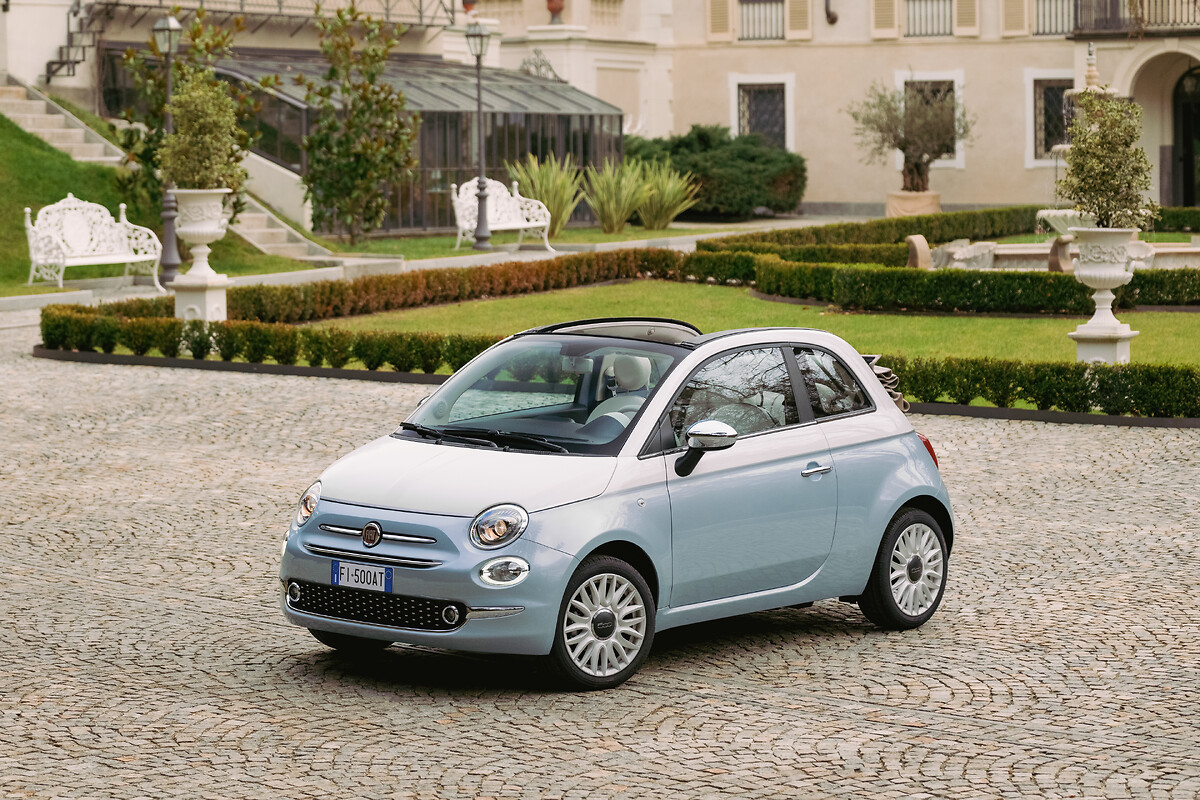
While the 500’s small dimensions suggest excellent fuel efficiency, its actual economy falls short of expectations. Most variants achieve approximately 27-30 mpg in combined driving figures easily matched or exceeded by larger, more practical competitors with conventional powertrains.
The 500’s requirement for premium fuel in some variants further increases operating costs by approximately $150-$300 annually compared to regular-fuel alternatives.
Insurance costs provide little relief, with the 500’s European origins and relatively expensive repair procedures resulting in premiums that typically exceed those of more mainstream compact alternatives. Some insurance providers classify the vehicle in higher risk categories based on historical claim frequencies and repair cost data.
The 500’s limited interior space and practicality frequently prompt owners to supplement it with rental vehicles for longer trips or larger cargo needs, an indirect ownership cost that can add hundreds or even thousands to annual operating expenses. This “second vehicle requirement” effectively multiplies ownership costs for many consumers.
While the Fiat 500 delivers undeniable style and character, its challenging reliability profile, rapid depreciation, and unexpectedly high operating costs make it one of the more financially punishing choices in the budget car segment.
3. Nissan Versa (with CVT transmission)
The Nissan Versa presents an initially compelling value proposition with its accessible starting price of approximately $15,000 to $18,000, positioning it among the most affordable sedan options in North America.
This attractive entry point, particularly in CVT-equipped models, masks significant long-term ownership costs that emerge as the vehicle ages. The Versa’s continuously variable transmission (CVT) represents its most problematic component from a financial perspective.
While this transmission type theoretically improves fuel efficiency, Nissan’s specific implementation has demonstrated concerning reliability issues across multiple vehicle generations.
Independent reliability studies indicate CVT failure rates significantly above industry averages, with repair or replacement typically costing $3,000 to $5,000, a catastrophic expense representing nearly a third of the vehicle’s value after several years of ownership. These failures most commonly occur between 60,000 and 100,000 miles, often just after warranty coverage expires.
Depreciation compounds the Versa’s financial challenges, with the model typically losing 50-55% of its value within the first three years significantly worse than segment leaders like the Honda Fit or Toyota Yaris.
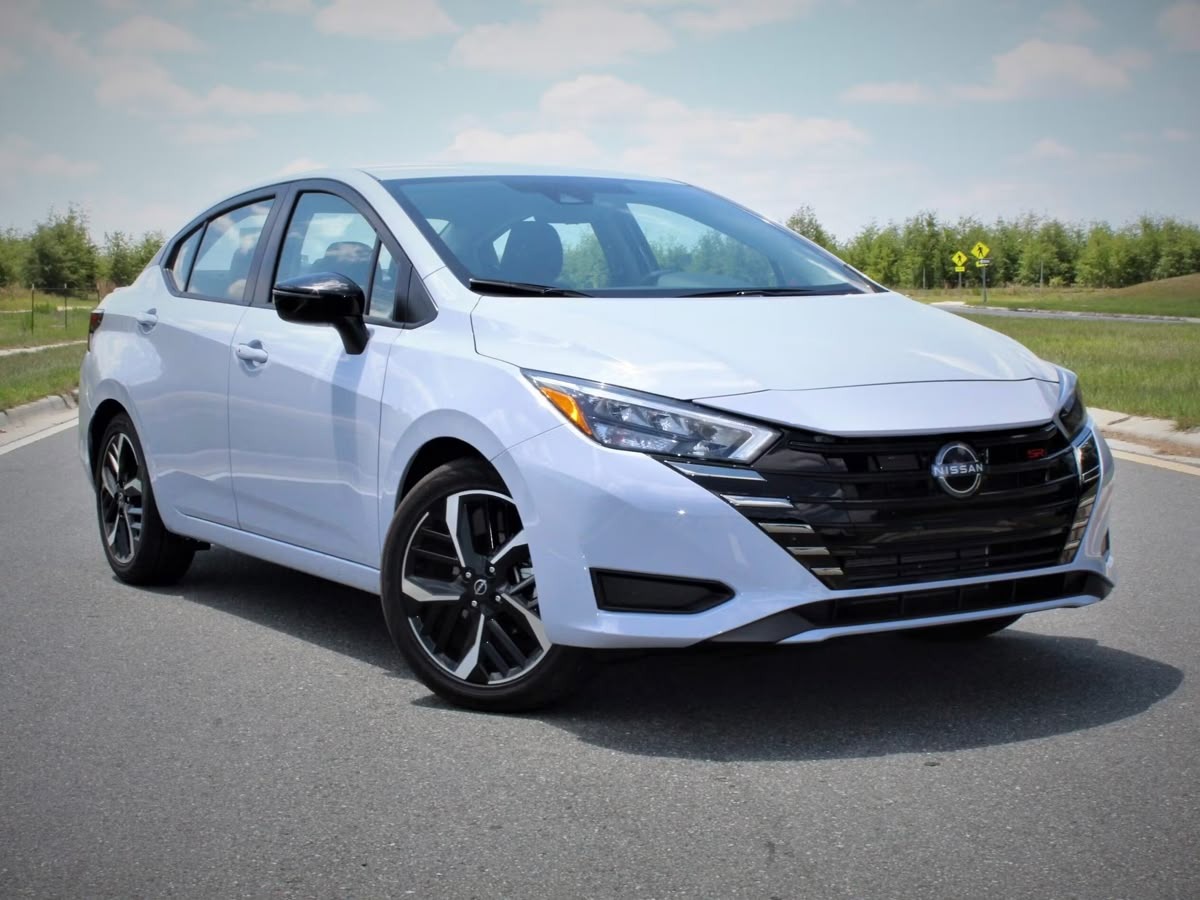
This accelerated depreciation reflects market awareness of the vehicle’s reliability concerns and relatively spartan feature set compared to slightly more expensive alternatives.
While the Versa delivers reasonable fuel economy ratings (approximately 32-35 mpg combined in CVT models), these efficiency benefits are substantially offset by higher maintenance costs that emerge as vehicles age.
Beyond the transmission concerns, cooling system issues, electrical problems, and suspension wear occur with greater frequency than segment averages, according to data from Consumer Reports and J.D. Power studies.
Insurance costs for the Versa typically fall in the moderate range for its class, providing neither significant savings nor penalties compared to alternatives.
However, as vehicles age and develop the reliability issues noted above, some owners report insurance challenges, including higher premiums or difficulties securing comprehensive coverage due to the vehicle’s diminished value relative to potential repair costs.
The Versa’s interior materials and build quality reflect its budget origins, with hard plastics and minimal sound insulation contributing to accelerated perceptions of aging and potential rattles or squeaks that may prompt premature replacement, an indirect cost factor not captured in traditional operating expense calculations.
For budget-conscious consumers, the Versa’s apparent value evaporates quickly when considering its problematic CVT reliability history, accelerated depreciation, and higher-than-expected maintenance costs as the vehicle ages.
4. Chevrolet Spark
The Chevrolet Spark enters the market with an undeniably attractive starting price of approximately $13,000 to $16,000, positioning it among the most affordable new cars available in North America.
This budget-friendly entry point, however, obscures several significant long-term cost factors that emerge throughout ownership. Depreciation represents the Spark’s most punishing financial characteristic, with the model typically losing 45-50% of its value within just the first two years of ownership.
After five years, resale values frequently fall below 25% of the original purchase price, significantly worse than segment alternatives from Honda and Toyota. This precipitous value erosion effectively negates much of the initial purchase price advantage, particularly for buyers who finance their purchase and may find themselves in negative equity positions for most of their loan term.
While the Spark delivers reasonable fuel economy (approximately 33-35 mpg combined), these efficiency benefits must be viewed in the context of the vehicle’s severe limitations.
The Spark’s tiny dimensions and modest 98-horsepower engine significantly restrict its practical utility, often requiring owners to rent larger vehicles for trips, moving, or transporting larger items.
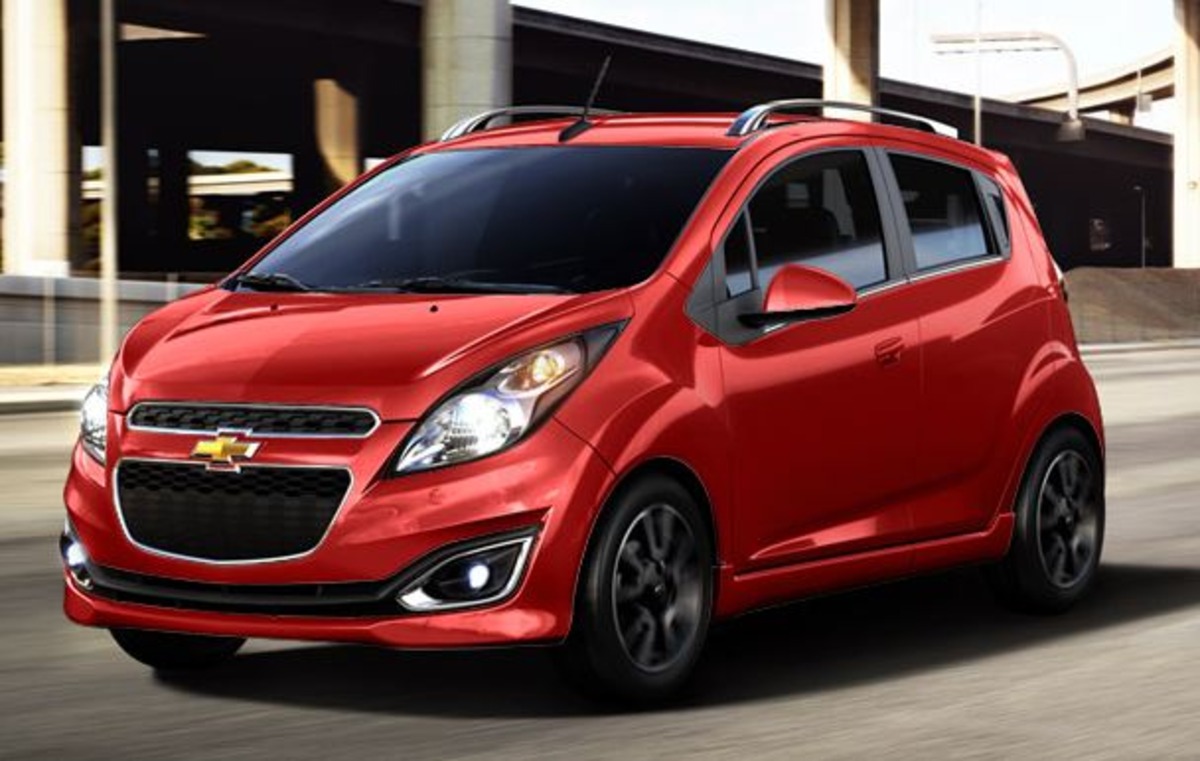
These supplemental transportation expenses, frequently overlooked in traditional cost analyses, can add $500-$1,000 annually to the effective ownership cost.
Safety considerations introduce another potential indirect cost factor. The Spark’s minimal physical presence and basic safety systems (compared to slightly larger alternatives) may result in more severe damage in collision scenarios.
Insurance data indicates that medical claims after accidents tend to be higher in microcar segments, potentially resulting in increased future premiums following incidents.
Maintenance costs for the Spark initially appear reasonable, but the vehicle’s diminutive size often complicates repair procedures by restricting access to components. Labor charges may exceed those of larger vehicles despite the Spark’s simpler mechanical systems.
Additionally, the model’s relatively low production volumes mean that specialized parts may command price premiums compared to higher-volume alternatives.
Insurance costs provide little relief from the Spark’s other financial challenges. Despite its low market value, insurance premiums typically remain similar to those of larger, more substantial vehicles due to increased injury claim patterns and repair cost inefficiencies noted above.
For budget-conscious consumers seeking truly economical transportation, the Spark’s extreme depreciation, practical limitations, and hidden ownership costs make it a problematic choice despite its appealing purchase price.
5. Ford EcoSport
The Ford EcoSport enters the subcompact SUV segment with a relatively accessible starting price of approximately $19,000 to $22,000, positioning it as a seemingly budget-friendly entry point into the popular crossover category.
This initial price advantage, however, conceals numerous ownership cost factors that accumulate significantly over time. Fuel economy represents one of the EcoSport’s most disappointing aspects, particularly considering its diminutive dimensions.
Most variants achieve only 23-27 mpg in combined driving figures, more typical of substantially larger vehicles. This inefficiency stems from the vehicle’s dated platform, relatively heavy curb weight for its size, and aerodynamic limitations.
Over a five-year ownership period, an EcoSport owner might spend $1,500-$2,500 more on fuel compared to more efficient alternatives like the Honda HR-V or Kia Soul.
Depreciation further erodes the EcoSport’s value proposition, with three-year depreciation rates typically reaching 50-55%, significantly worse than segment leaders.
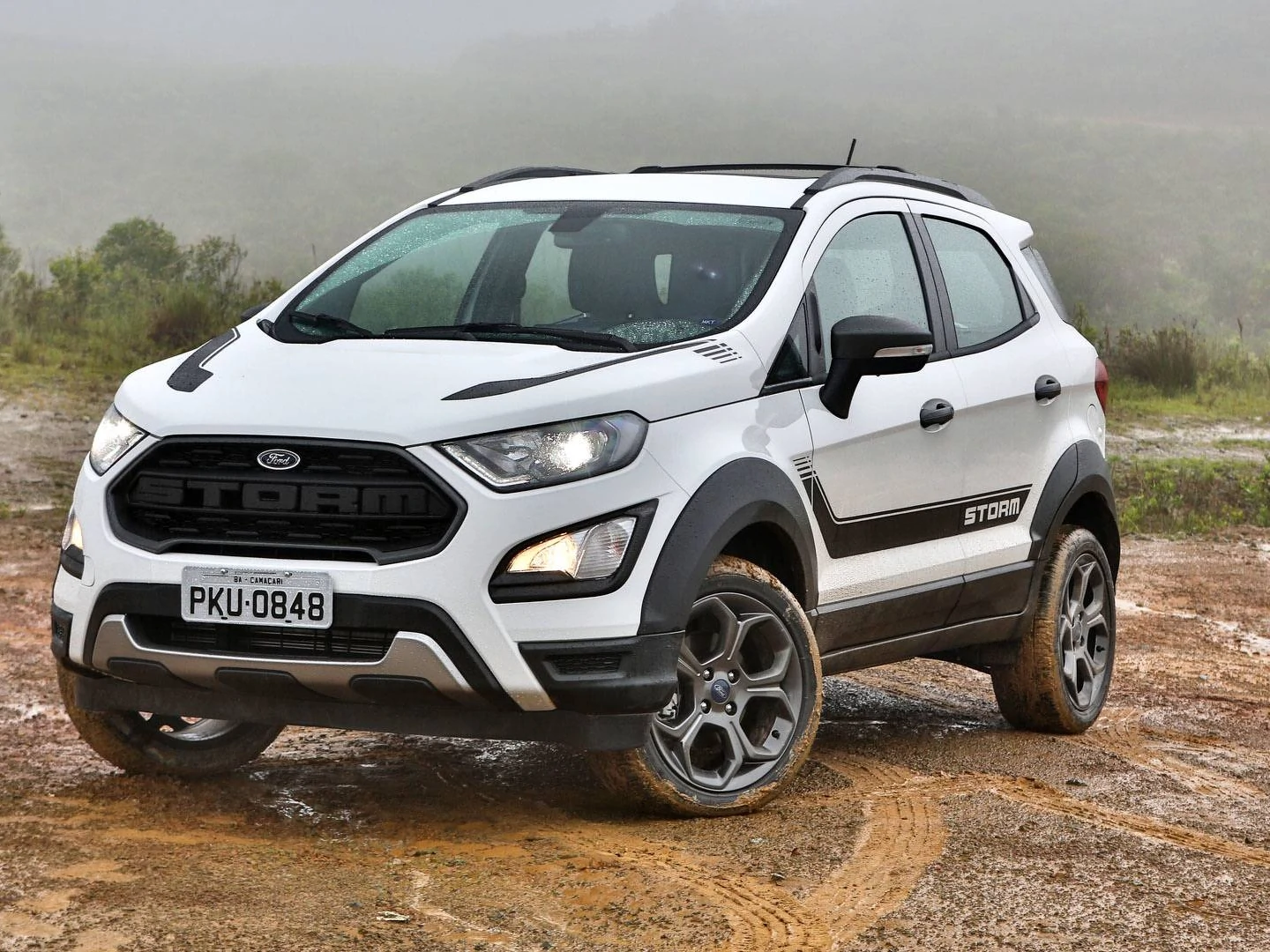
Ford’s decision to discontinue the model in North America has accelerated this depreciation curve, as potential used buyers express concerns about long-term parts availability and service support. After five years, EcoSport values frequently fall below 30% of the original purchase price, creating potential negative equity situations for owners with longer-term financing.
Reliability concerns compound the model’s financial challenges. The EcoSport has demonstrated problematic reliability patterns according to Consumer Reports and J.D. Power studies, with transmission issues, electrical system failures, and climate control problems occurring with concerning frequency.
The vehicle’s unique rear swing gate design has proven particularly problematic, with hinge and latch failures representing expensive repairs that typically emerge outside warranty periods.
Insurance costs for the EcoSport provide little relief, with premiums typically similar to those of more substantial compact crossovers despite the Ford’s lower value and performance capabilities.
This insurance cost inefficiency stems from higher-than-expected claim frequencies and repair cost data accumulated since the model’s introduction to North America.
The EcoSport’s cramped interior dimensions and modest cargo capacity frequently prompt owners to supplement it with rental vehicles for longer trips or larger cargo needs, an indirect ownership cost that can add hundreds annually to operating expenses.
This “second vehicle requirement” effectively multiplies ownership costs for many consumers. While the Ford EcoSport delivers the raised seating position many buyers seek, its inefficient powertrain, concerning reliability history, and accelerated depreciation make it one of the more financially punishing choices in the budget crossover segment.
Also Read: 5 Reliable Old Trucks and 5 That Are Best Left Alone

